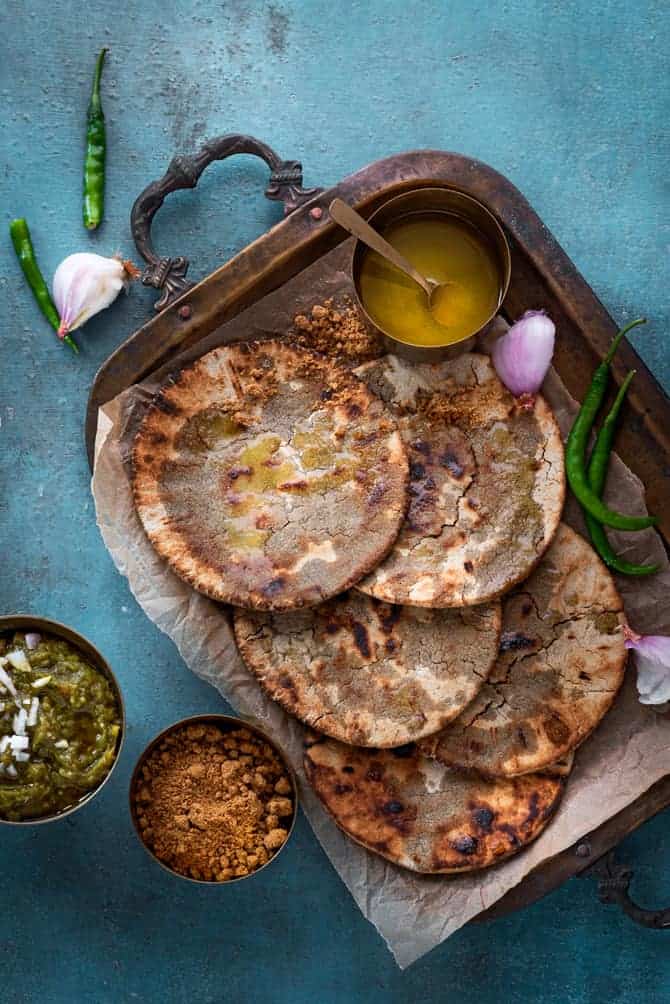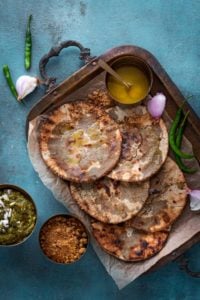Winter has already hit the corners, it’s time to get all creative and prepare all the winter delicacies. Bajre Ki Roti is very popular and regular for people living in India and in the neighboring countries. Bajra also known as Pearl Millet has the largest cultivation of the crop in India. In every part of the country there are different names for this very Bajre Ki Roti. It’s a staple bread, coarser than roti and can be made hard or soft as per your desire. Also called as Bhakri in the Western parts of India i.e. Goa, Maharashtra and Rajasthan. And called as Tikri in the Northern India. This Bajre Ki Roti can be eaten with any type of Sabzi, Chutney, Dahi or even Bharta. I’ve recently posted Baigan Ka Chokha (here’s the link) which tastes extremely delicious with this form of an Indian bread. Not just Bajre Ki Roti but rather than that I also often make gram flour (besan ki roti) roti and Jowar ki roti. Nachni (red finger millet) and Rice flour roti are also served verily. Traditionally, it has been a regular savory for farmers, where they carry the roti as their meal to the farm and have it either with a chutney or onion or a green chili. The taste of the sweet and salty Bajre Ki Roti is something worth a try. Also greasing it with butter or desi ghee is just so mouth tendering, I couldn’t tell you. If you’re a healthy diet follower, you may add this in your diet as I’ve mentioned it earlier it is a staple food and contains health benefits. Bajre Ki Roti is in nutrients, is rich in Vitamin B which is a good source of nutrition for a healthy skin and not just skin but Bajra is also helpful in reducing weight. High in Fiber and Phosphorous and also helps maintain diabetes and decreases high blood pressure. And my beautiful ladies out there, let me inform you that it’s also an excellent source of antioxidants which helps prevent ageing. Now stepping up to the ingredients, all you need to knead is Bajre ka Atta i.e. Pearl Millet flour, Warm water and Salt (totally optional). After arranging these I simply just make a dough out of it. And yes the dough isn’t like the normal wheat flour one. The consistency of water is very important as extra water may make the dough lose and may create hassle when making the roti. This Bajre Ki Roti is best served immediately as the tendering flavor gives a lip smacking taste. I like the crisp outer and soft inner bajre ki rotis, but you can make it into thin and soft ones. Mentioning below the ingredients and method, try it as soon as possible as it is best had during winters. Warm and delicious J
Bajre Ki Roti Recipe Card
📖 Recipe

